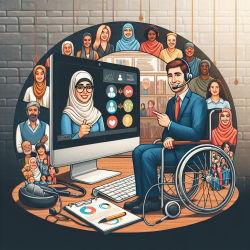Introduction
As educators and therapists, understanding the unique challenges faced by Black and Latinx transgender youth is crucial for providing effective support. A recent study published in JAMA Network Open sheds light on the mental health and psychosocial risk factors affecting these youth compared to their peers. This blog will explore the findings and suggest ways practitioners can use this information to enhance their skills and support strategies.
Key Findings from the Research
The study compared Black and Latinx transgender youth with White transgender youth and Black and Latinx cisgender youth, focusing on mental health symptoms and psychosocial factors. Key findings include:
- Black and Latinx transgender youth experience high rates of depressive symptoms and suicidality, similar to White transgender youth but higher than Black and Latinx cisgender youth.
- These youth face significant psychosocial risk factors, including school-based victimization and various forms of harassment (race, gender, and sexuality-based).
- Protective factors like school connectedness and caring adult relationships are less effective for Black and Latinx transgender youth compared to their peers.
Implications for Practitioners
Practitioners working with Black and Latinx transgender youth can take several steps to improve their support strategies:
- Screening for Mental Health Issues: Regular screening for depressive symptoms and suicidality is essential. Practitioners should be aware of the higher risk levels and be prepared to offer appropriate interventions.
- Addressing School-Based Harassment: Collaborate with schools to create safe and inclusive environments. Advocate for policies that address all forms of harassment and provide training for staff to recognize and intervene in bullying situations.
- Enhancing Protective Factors: Work on strengthening school connectedness and developing caring adult relationships. This might involve mentoring programs or creating support groups that foster a sense of belonging.
Encouraging Further Research
The study highlights the need for continued research into the specific needs of Black and Latinx transgender youth. Practitioners are encouraged to engage in research efforts or collaborate with academic institutions to explore further:
- The impact of intersectional stigma on mental health outcomes.
- The effectiveness of different intervention strategies in diverse school settings.
- Longitudinal studies to track mental health outcomes over time and identify critical intervention points.
Conclusion
Understanding the unique challenges faced by Black and Latinx transgender youth is vital for practitioners aiming to provide effective support. By implementing findings from recent research, educators and therapists can develop more targeted interventions that address both the risks and protective factors influencing these youth's mental health. To read the original research paper, please follow this link: Mental Health and Psychosocial Risk and Protective Factors Among Black and Latinx Transgender Youth Compared With Peers.










